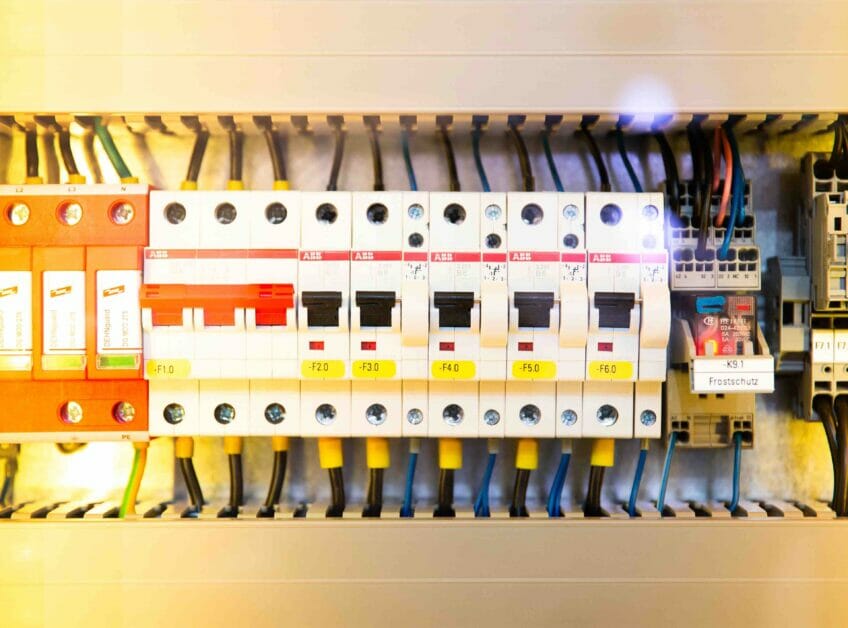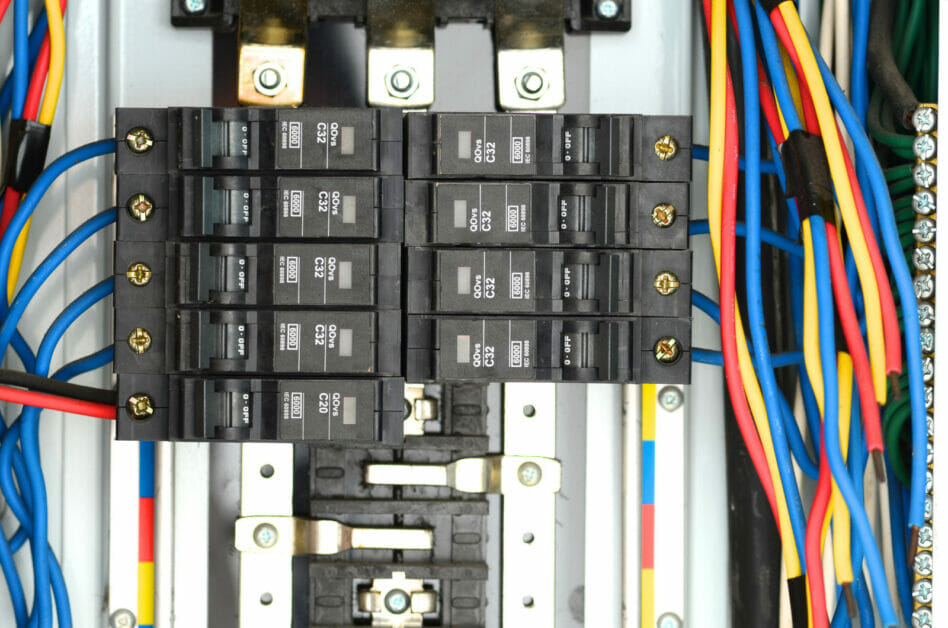What Size Breaker for 8 Gauge Wire? (Wiring Deep Dive)

You might be lost as to what size breaker to use for an 8 gauge wire. You’ve come to the right place because that’s exactly what I’ll be breaking down for you today!
The quick answer is – typically, a 40 to 50 Amp circuit breaker pairs well with an 8-gauge wire. But hold on! It isn’t as simple as it sounds. Several factors are at play here, like the wire used, load type, and run length.
So stick around because, by the end of this read, you’ll be fully equipped to make those decisions confidently!
Choosing the Right Breaker Size: An Overview

When wiring your home or any electrical project, choosing the right breaker size is one of the most vital decisions.
So let’s say you’ve got an 8 gauge wire. You’re probably wondering what size breaker would be best for that kind of wire, right?
Here’s something pretty important – the wire gauge and breaker size are directly related. A larger diameter (lower gauge number) wire can handle more electrical current safely than a smaller one.
For most residential applications with 8-gauge wires, we use either a 40-amp or a 50-amp circuit breaker, depending on the load requirement and type of insulation used.
But here’s where things get tricky – just because an 8-gauge can technically handle up to a certain amperage doesn’t mean it always should!
Factors to Consider When Selecting a Breaker for 8-Gauge Wire

The first thing you’ve got to understand is Ampacity. Ampacity refers to how much current a wire can handle safely without overheating.
For an 8-gauge wire, this is typically around 40 amps. So, consider its limitations if you run some serious power through that wire.
Other factors:
- Wire Length: Now, here’s where things get interesting! The length of your wire can also affect the breaker size you’ll need. Longer wires could mean more resistance and potential voltage drop (the decrease in electrical potential along the path of a current). If your circuit is long, you may need to go up a size with your breaker – but don’t jump too far!
Wire Length and Breaker Size
| Wire Length (Feet) | Recommended Breaker Size (Amps) |
|---|---|
| Up to 50 | 40 |
| 51 – 100 | 40 |
| 101 – 150 | 40-50 |
| 151 – 200 | 50 |
| Over 200 | Consult an Electrician |
Please note that the table is based on a scenario using an 8-gauge wire with a typical ampacity of around 40 amps. For wire lengths over 200 feet, it’s recommended to consult an electrician to account for voltage drop and other factors.
- Continuous Load: Another key factor? Whether or not your load is continuous. A continuous load will run for three or more hours – think of large appliances like electric ranges or water heaters.
| Load Type | Max Breaker Size |
|---|---|
| Non-continuous load | Up to 125% |
| Continuous load | Maximum of 100% |
Other factors are at play, like your appliances’ efficiency, safety, and lifespan.
- Always consider what appliances will be running on this circuit.
- Be aware of any specific requirements from appliance manufacturers.
- And remember – safety first! Never overload circuits just because they ‘technically’ can handle it.
Now you’ve got a good grasp on some factors when selecting a breaker for an 8-gauge wire: Ampacity limit (usually about 40 amps), wire length considerations, and whether you’re dealing with a continuous load!
National Electrical Code (NEC) Guidelines on Breaker Sizes
Let’s dive into the nitty-gritty of National Electrical Code (NEC) guidelines. It’s crucial to understand this if you’re dealing with 8-gauge wire and want to ensure your setup is safe and up to code.
First, I should clarify that NEC isn’t just some arbitrary rule. These are safety standards designed to protect folks like you and me from electrical hazards.
They’ve got our backs on ensuring our electrical systems are installed correctly and safely.
When we talk about breaker sizes for an 8 gauge wire according to NEC, here’s what you need to know:
- A copper wire can handle a maximum of 40 to 55 amps.
- If your wire is aluminum, the max breaker size drops to 30 to 45 amps.
| Load Type | Max Breaker Size |
|---|---|
| Copper Wire | 40-55 Amps |
| Aluminum Wire | 30-45 Amps |
Now don’t forget – these aren’t suggestions or “nice-to-haves.” They’re hard-and-fast rules by experts who’ve done their homework.
If you decide not to follow these guidelines because they seem inconvenient or unnecessary…well, I wouldn’t recommend that!
Wrapping up this section – remember that while it might seem tedious or confusing now, understanding these NEC guidelines can save us from major headaches (and hazards!).
So take a deep breath and pat yourself on the back for taking the initiative toward safer wiring practices!
Real-World Application of 8-Gauge Wire and Appropriate Breakers

So, let’s dive into a real-life example I encountered not too long ago. A friend was setting up his welder in his garage workshop.
After inspecting the manufacturer’s guidelines, we discovered that it required an 8-gauge wire for operation.
The welder had a running wattage of about 2,400 watts and occasionally peaked at around 3,600 watts when under heavy load. Now comes the fun part – figuring out what size breaker he’d need to run his new toy safely!
Firstly, we needed to calculate the current draw on the circuit, which is achieved by dividing the power (in watts) by voltage (in volts).
Considering he was running it off a standard US power supply (120V), our calculation looked something like this:
| Power (Watts) | Voltage (Volts) | Current Draw (Amps) |
|---|---|---|
| 2400 | 120 | 20 |
| 3600 | 120 | 30 |
All right then! The results showed that his welder drew around 20 amps while operating normally and could spike up to 30 amps under heavy load.
Now remember – electrical codes generally require circuits to be designed so they’re not loaded beyond eighty percent of their maximum capacity for continuous use.
That meant we were looking for a breaker rated slightly higher than our calculated figures.
And there you have it! We ended up installing a 40-amp breaker with our trusty old 8-gauge wire.
This provided ample capacity for safe operation and even left some room for those occasional peaks in demand without tripping the breaker!
- Always make sure your wiring can handle the amperage.
- Your safety should always come first!
- When in doubt, consult with an electrician or professional!
References
Websites:
- NFPA (National Electrical Code). https://www.nfpa.org/codes-and-standards/
- Mike Holt’s. https://www.mikeholt.com/
Books:
- “Wiring Simplified: Revised 30th Edition” by H. P. Richter
Organizations:
- NFPA (National Fire Protection Association). http://www.nfpa.org/
- IEC (Independent Electrical Contractors). https://iec.ch/
